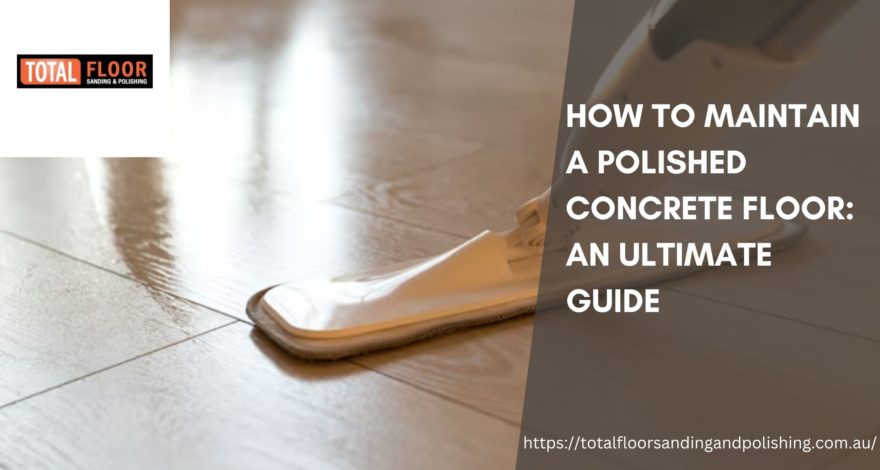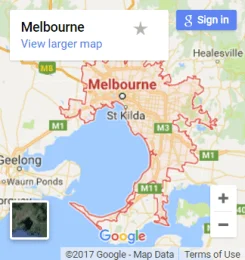Polished concrete floors have become increasingly popular in modern design due to their sleek and contemporary appearance. These floors offer a unique blend of durability, beauty, and low maintenance, making them a popular choice for both residential and commercial spaces.
However, like any other flooring material, concrete floors after professional floor polishing Geelong services require regular polished concrete floor maintenance services to preserve their polished appearance and extend their lifespan.
In this ultimate guide, we will delve into the various aspects of how to maintain polished concrete floors, providing valuable tips and insights to keep your floor looking its best.
I. Understanding Polished Concrete Floors
Polished concrete floors are created by grinding down the surface of a concrete slab to expose the aggregate and then polishing it to achieve a smooth and glossy finish. These floors offer numerous benefits, including enhanced durability, resistance to stains and spills, and low maintenance requirements. Different types of polished concrete floors are available, such as cream polished concrete, salt-and-pepper polished concrete, and exposed aggregate polished concrete, each offering a unique aesthetic appeal.
II. Initial Care and Cleaning
To ensure the longevity and beauty of your newly installed polished concrete floor, it is crucial to provide it with proper care and cleaning from the start. Here are some step-by-step instructions to help you with the initial care and cleaning process:
- Cleaning: Using a soft broom or vacuum cleaner with a brush attachment, begin by removing any loose debris, such as dust and dirt. This will prevent scratching the surface during the subsequent cleaning steps.
- Mopping: Use a damp mop or a microfiber mop to clean the floor using a pH-neutral cleaner specifically designed for polished concrete floors. Avoid using harsh chemicals or acidic cleaners as they can damage the polish. Follow the manufacturer’s instructions for dilution ratios and application methods.
Hiring professional floor polishing Geelong services for the initial cleaning and polishing process is highly recommended. Professionals of floor polishing Geelong have the expertise and specialised equipment to ensure a flawless finish and minimise the risk of damage to the floor.
III. Regular Maintenance Tips
A. Daily Cleaning Routine
To maintain the polished appearance of your concrete floor, it is essential to incorporate a daily cleaning routine. Here are some guidelines to follow:
Sweeping or vacuuming: Regularly remove dirt, dust, and debris from the floor using a soft bristle broom or a vacuum cleaner with a brush attachment. This will prevent scratches and keep the floor looking clean.
Damp mopping: Use a damp mop or a microfiber mop to clean the floor daily or as needed. Avoid using excessive water or harsh cleaning agents, as they can dull the polish. Instead, opt for a mild, pH-neutral cleaner formulated explicitly for polished concrete floors.
B. Stain Prevention and Removal
While polished concrete floors are relatively resistant to stains, taking preventive measures and promptly addressing any spills or stains is still essential. Here are some tips for stain prevention and removal:
Identifying common staining agents: Familiarise yourself with common staining agents such as oil, grease, wine, coffee, and acidic substances. Knowing the potential culprits will help you take immediate action to prevent staining.
Tips for immediate action: When a spill occurs, blot it immediately with a clean cloth or paper towel to absorb as much of the liquid as possible. Avoid rubbing the spill, as it can spread the stain or push it deeper into the concrete. Once the spill is absorbed, clean the area with a mild, pH-neutral cleaner and water. For stubborn stains, consult the next point.
Recommended cleaning solutions: Different stains may require specific cleaning solutions. For example, oil or grease stains can be treated with a degreaser, while acidic stains may require a mild acid-based cleaner. Always follow the manufacturer’s instructions and test any cleaning solution in an inconspicuous area before applying it to the stained spot.
IV. Addressing Potential Issues
A. Cracks in Polished Concrete Floors
Cracks can occur in polished concrete floors due to various factors, such as settling of the subfloor, temperature fluctuations, or excessive weight. While small hairline cracks are often considered normal and can add character to the floor, larger cracks may require attention. Here are some tips for dealing with cracks in polished concrete floors:
Common causes and preventive measures: Understanding the causes of cracks can help you take preventive measures. Ensuring proper subfloor preparation, controlling temperature and humidity levels, and avoiding excessive weight or impact can minimise the risk of cracks.
Seeking professional help: If you notice significant cracks or if the cracks are causing structural concerns, it is advisable to seek professional assistance. Professionals can assess the extent of the damage and provide appropriate repair solutions.
B. Dealing with Scratches or Scuffs
While polished concrete floors are highly durable, they are not entirely scratch-resistant. Minor scratches or scuffs can occur due to sliding furniture, sharp objects, or heavy foot traffic. Here are some DIY methods for minor scratches:
- Light scratches: You can use a fine-grit diamond polishing pad or a polishing compound specifically designed for polished concrete floors. Gently rub the scratched area in a circular motion until the scratch is less noticeable.
- Deep scratches or scuffs: It is recommended to seek professional assistance for deeper scratches or scuffs. Professionals have the expertise and equipment like the best polished concrete floor cleaner to repair deep scratches without compromising the surrounding area.
V. Long-Term Maintenance Strategies
To ensure the longevity and continued beauty of your polished concrete floor, consider implementing the following long-term maintenance strategies:
A. Periodic Sealing and Re-Polishing
Over time, the polish on a concrete floor may wear down, resulting in a dull appearance. Periodic sealing and re-polishing can help restore the shine and protect the surface. Hiring professionals for polishing existing concrete floors task is best as they have the knowledge and equipment to achieve consistent results.
B. Protecting Polished Concrete Floors from Damage
To prevent scratches, dents, and other forms of damage, consider implementing the following protective measures:
- Furniture protectors: Use felt pads or furniture glides on the legs of chairs, tables, and other furniture to prevent scratches and scuffs when moving them across the floor.
- Area rugs and doormats: Place area rugs or doormats in high-traffic areas to minimise dirt, debris, and moisture accumulation. This will help protect the floor and make cleaning easier.
Conclusion
Maintaining a polished concrete floor requires regular attention and care. By following the guidelines in this ultimate guide, you can ensure that your polished concrete floor remains pristine for years to come. Remember the importance of daily cleaning routines, stain prevention and removal, and addressing potential issues promptly. Top of all, consider periodic sealing and re-polishing from Total Floor Sanding And Polishing for expert advice and floor polishing Geelong services. Let us implement protective measures to safeguard your floor from damage. With proper maintenance, your polished concrete floor will continue to impress with its sleek appearance and durability.


